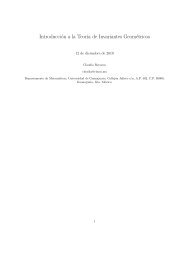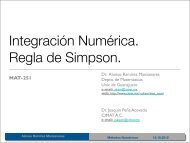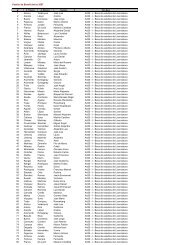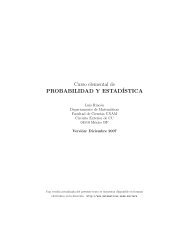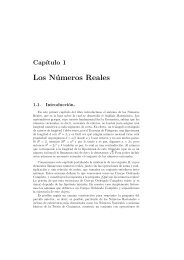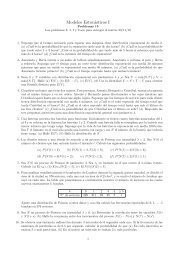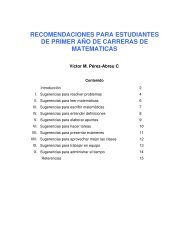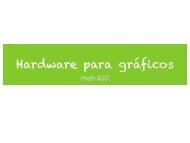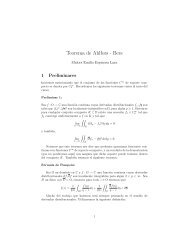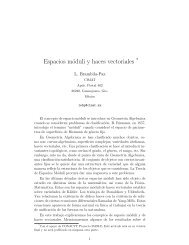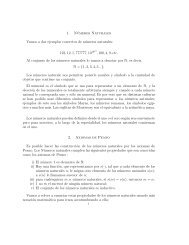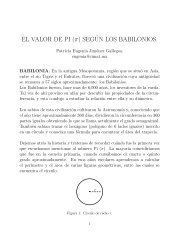Tutorial de Apuntadores y Arreglos en C - Cimat
Tutorial de Apuntadores y Arreglos en C - Cimat
Tutorial de Apuntadores y Arreglos en C - Cimat
Create successful ePaper yourself
Turn your PDF publications into a flip-book with our unique Google optimized e-Paper software.
}<br />
for (i = 0; i < 10; i++)<br />
{<br />
printf("%d ", arr[i]);<br />
}<br />
bubble(arr,10);<br />
putchar('\n');<br />
for (i = 0; i < 10; i++)<br />
{<br />
printf("%d ", arr[i]);<br />
}<br />
return 0;<br />
void bubble(int a[], int N)<br />
{<br />
}<br />
int i, j, t;<br />
for (i = N-1; i >= 0; i--)<br />
{<br />
for (j = 1; j n);<br />
}<br />
Si nuestro objetivo es hacer <strong>de</strong> nuestra rutina <strong>de</strong> or<strong>de</strong>nación in<strong>de</strong>p<strong>en</strong>di<strong>en</strong>te <strong>de</strong>l tipo <strong>de</strong> datos, una manera <strong>de</strong><br />
lograrlo es usar apuntadores sin tipo (void) para que apunt<strong>en</strong> a los datos <strong>en</strong> lugar <strong>de</strong> usar el tipo <strong>de</strong> datos<br />
<strong>en</strong>teros. Para dirigirnos a este objetivo, com<strong>en</strong>zaremos por modificar algunas cosas <strong>en</strong> nuestro programa <strong>de</strong><br />
arriba, <strong>de</strong> modo que podamos usar apuntadores. Empecemos por meter apuntadores <strong>de</strong>l tipo <strong>en</strong>tero:<br />
bubble_3.c<br />
/* Program bubble_3.c from PTRTUT10.HTM 6/13/97 */<br />
#inclu<strong>de</strong> <br />
int arr[10] = { 3,6,1,2,3,8,4,1,7,2};<br />
void bubble(int *p, int N);<br />
int compare(int *m, int *n);<br />
40



